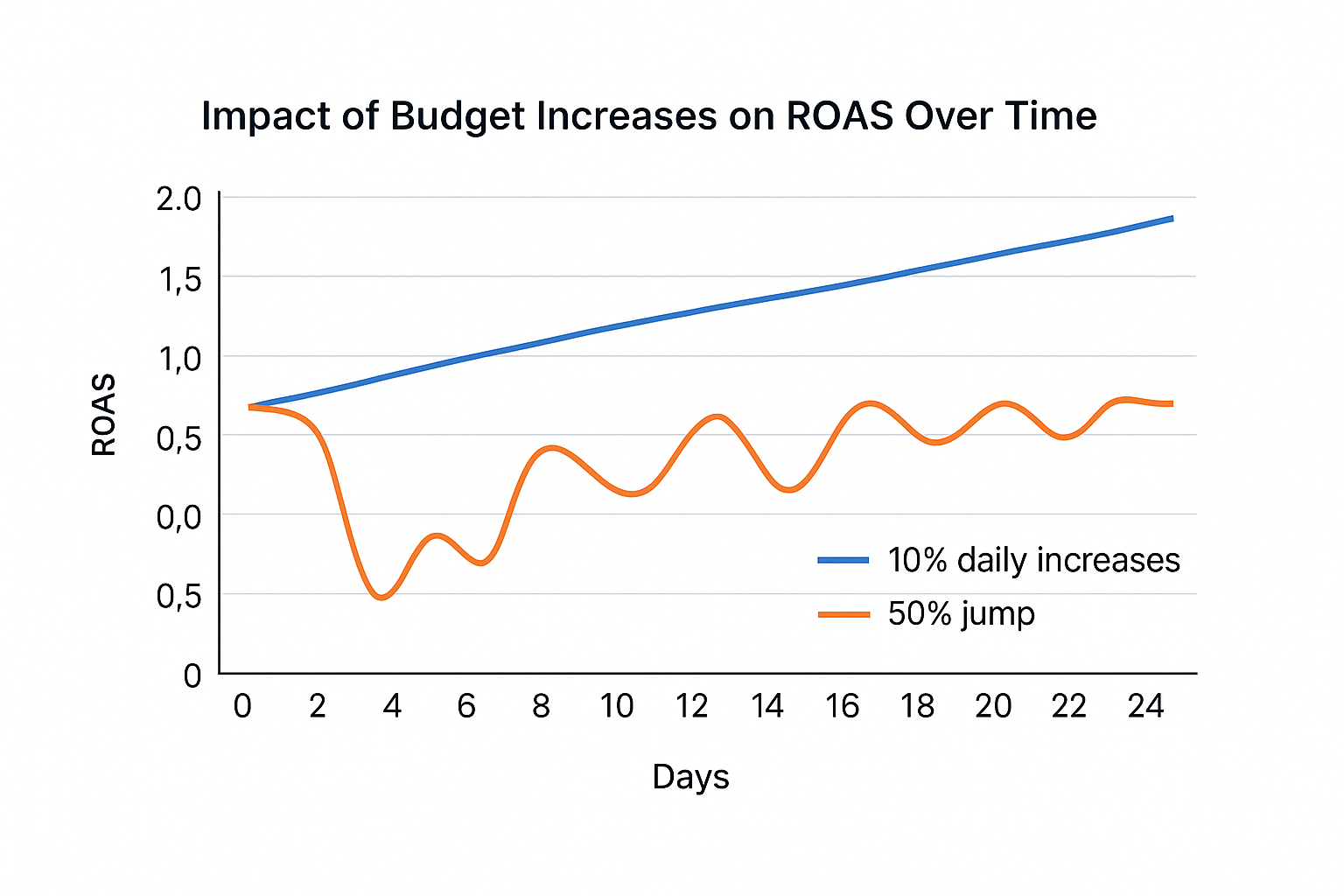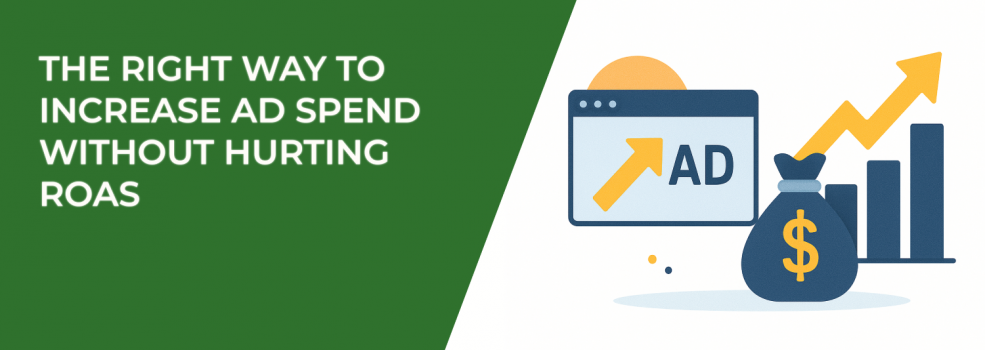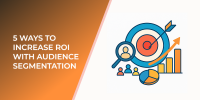Scaling ad spend should feel like a win — but for many advertisers, it becomes a trap. You double your budget, expecting double the results, but instead, your ROAS starts slipping, your cost per conversion creeps up, and your once-solid campaigns lose their shine.
So how do you scale without sabotaging performance? The answer lies in controlled growth, smart testing, and not trusting the algorithm blindly.
Let’s dig in.
1. Why ROAS Tanks When You Scale Too Fast
If you've scaled ads before and watched your returns collapse, you're not alone. It’s a common trap, especially in Facebook and Instagram campaigns.
Here's what typically causes ROAS to drop:
-
Audience fatigue. You’re targeting the same people more often, which drives frequency up and interest down.
-
Algorithm disruption. Large budget spikes knock your campaign out of the learning phase or reset optimization.
-
Creative burnout. Scaling stale creatives just amplifies poor performance.
-
Poor budget allocation. Increasing spend equally across all ad sets doesn’t work when only a few are profitable.
Want a deeper dive into this issue? Read Why You See 'Ad Set May Get Zero' on Facebook and How to Fix It.
2. Follow the Golden Rule: Scale in Small Steps
The biggest mistake advertisers make when scaling is moving too fast. If you double your spend overnight, you’re almost guaranteed to kill performance.

Instead, use this approach:
-
Increase daily budgets by 10–20% at a time.
-
Monitor ROAS after each bump.
-
Wait 48–72 hours before scaling again.
This helps the algorithm adjust without re-entering the learning phase — a critical moment that can cause volatility and wasted spend if triggered too often.
For extra control, set automated rules in Ads Manager. For example, only increase spend if ROAS stays above 2.5 for three days straight. This removes emotional decision-making and gives you objective criteria to grow.
3. Only Scale What’s Proven
Don’t throw more money at everything. Only scale campaigns or ad sets that meet specific performance benchmarks. That means:
-
Stable ROAS (not spiky or declining).
-
Low frequency (under 2.0 for prospecting).
-
Healthy CTRs (1%+ for most industries).
-
Solid conversion volume (20+ per week).
If a campaign is still in testing, hold off on scaling. Test cheap. Scale when proven.
Need help identifying scalable audiences? Check out Facebook Ad Targeting 101: How to Reach the Right Audience.
4. Use the Right Budget Strategy (ABO vs Advantage Campaign Budget)
Scaling strategy depends on how you’re structuring budgets.

-
Use ABO (ad set budgets) when testing different audiences or creatives. This gives you more control and clarity.
-
Use Advantage Campaign Budget after you’ve validated your ad sets and want the algorithm to find the most efficient allocation.
One trick that works well? Start with ABO to isolate winners, then duplicate into Advantage Campaign Budget for efficient scaling.
Not sure which objective to choose? Here's a guide that breaks it down: Meta Ad Campaign Objectives Explained.
5. Refresh Creatives Before Scaling
If your ad has been running for weeks with the same image, angle, or call-to-action, scaling will only highlight its weaknesses.
Before increasing spend:
-
Test new visuals, even small tweaks.
-
Add urgency (“Offer ends tonight.” or “Only 3 left.”).
-
Try UGC or product demo videos.
-
Rotate copy angles (social proof, scarcity, benefits-driven).
Creative fatigue is a silent ROAS killer. You can’t out-spend a tired ad — you need fresh ideas.
Need help generating creatives fast? Use tools from The Best AI Text and Image Generators.
6. Scale With Audience Expansion — Not Just Budget
Even the best audience will hit a ceiling. Scaling isn’t just about raising budgets — it’s about finding scalable segments.
Try:
-
New lookalikes (2–5%, 5–10%).
-
Broader targeting with exclusions.
-
Stacked interest groups.
-
International expansion (if relevant).
You can also revisit cold audiences that didn’t work before. Sometimes, with new creative or timing, they suddenly convert. For tips, see How to Re-Engage Cold Audiences with Facebook Ad Targeting.
7. Watch Funnel Drop-Off and AOV
Scaling isn’t just a top-of-funnel game. If your site, funnel, or checkout process can’t handle increased traffic, ROAS will slide — fast.
Ask yourself:
-
Is your average order value (AOV) holding steady?
-
Are add-to-cart and checkout rates stable?
-
Are you pushing upsells, bundles, or free shipping thresholds?
Improving AOV even slightly can offset higher CACs when scaling. For ideas, check out Bundles, Upsells, and Ads: AOV Optimization Tactics.
8. Scale Based on Margins, Not Just ROAS
ROAS is useful — but misleading when viewed in isolation. If your product margin is 80%, a 2.0 ROAS might be highly profitable. If it’s 20%, you might be barely breaking even at 3.0.
Track:
-
Your blended ROAS (across channels).
-
Your customer acquisition cost (CAC).
-
Your gross margin per sale.
-
Your break-even point.
If you don’t know what a profitable CAC is for your business, you’ll always be guessing when scaling — and that’s a fast way to waste money.
What to Do Next
Scaling ad spend isn’t about getting louder. It’s about getting smarter. The right campaigns, the right timing, the right creative, and the right audience can take you from “barely profitable” to “scaling profitably.”
Start by auditing your current best-performing ad set. Could it handle a 20% budget bump? Is creative still fresh? Are your audiences saturated?
If yes, scale it — slowly, surgically, and with full attention to the numbers.
Because the real win in advertising isn’t spending more. It’s spending better.

